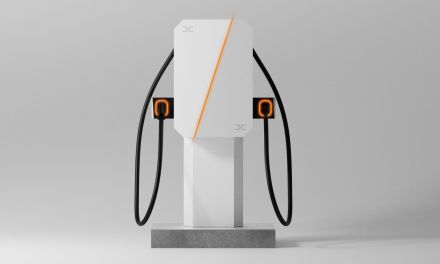TAE Technologies, which describes itself as the world’s largest private fusion energy company, has announced the formation of a new division dedicated to power management. With the new unit, it hopes to enable the next generation of electric vehicles (EVs) and accelerate the uptake of electrified energy and storage systems.
Based in Foothill Ranch, CA, TAE Technologies was founded in 1998 to commercialize safe, cost-effective fusion power that will integrate into the grid with the cleanest environmental profile. With over 900 issued patents, more than $880 million in private capital, six generations of National Laboratory-scale devices, and an experienced team of 250 employees, TAE believes it is on the cusp of delivering a transformational energy source capable of sustaining the planet for centuries.
The essential requirement for capturing net energy across all approaches to fusion is high-quality plasma confinement, believes TAE Technologies. It has developed a proprietary platform called an advanced beam-driven field-reversed configuration (FRC), which combines accelerator physics and plasma physics to solve the challenge of confinement—both from a cost and performance perspective.
Since its beginnings, TAE has been committed to pursuing a fuel cycle based on safe, plentiful hydrogen-boron, also known as proton-boron or p-B11, which avoids any environmental impact, particulate emissions, and radioactivity. In addition, this fuel cycle maximizes the durability and lifetime of our plants. The company’s configuration can uniquely accommodate hydrogen-boron, and also operate on deuterium-helium-3 (D-He-3) and conventional deuterium-tritium (D-T) fuel.
So why is the company getting into the EV ecosystem? With no viable power management solution available in-market to bridge the gap for fusion needs, according to TAE, it developed a proprietary, intelligent modular technology that manages power flows ranging from 10+ kW, the equivalent consumption of a single-family home, to gigawatt levels, as produced by large power stations. The software can manage power without regard to battery chemistry or dimension.
TAE Power Management will use technologies originally developed for TAE’s fusion power architecture and the requirement to intermittently store vast amounts of energy and release it in precise, high-power increments for its fusion test facilities. It aims to enable broader adoption of EVs by revolutionizing the infrastructure around electric mobility. Its end-to-end powertrain is designed to deliver maximum efficiency and range, greater safety and reliability, more design flexibility, and substantially faster charging—all at a lower cost.
Combined, the energy storage and electric mobility markets are estimated by TAE to be worth $1.2 trillion annually by 2030.
“As global power demand rises, we will need more efficient and sustainable solutions to address climate change and transition to an ever more electrified world,” said Michl Binderbauer, CEO, TAE Group. “TAE believes fusion is central to achieving this outcome. Now, the technology that has been powering TAE’s innovative fusion platform since 2017 is being commercialized into a complete, clean energy ecosystem.”
The new division is already staffed with experienced engineers, product specialists, and a business development team. David Roberts has been appointed Chief Executive Officer of the Power Management division, reporting directly to Binderbauer.
TAE’s Power Management technology “will completely transform the EV mobility market, while significantly reducing operating costs,” said Roberts. “Not only has it enabled tremendous strides in accelerating commercial fusion, the immediate applications for such technology also stand to advance everything from utility transmission to EV efficiency.”
Its scalable power modules work together as a network to deliver precise power output while monitoring and actively controlling state-of-charge and temperature at the individual module level. A small number of these integrated power “building blocks” eliminates the need to source from thousands of system-specific electronic components such as inverters, yielding massive gains in performance, efficiency, and longevity for large-scale savings.
TAE Power Management’s universal platform solution has additional applications in residential and commercial energy storage, industrial and data centers, peak shaving, load shifting, power factor correction, microgrids, electric mobility, EV charging stations, and more.
“TAE Power Management will improve storage, optimize access to renewable energy sources, extend the range and performance of electric vehicles, and help build a more efficient grid for years to come,” added Binderbauer.
It has ambitious plans to grow and scale quickly, generating revenues as early as 2022 through licensing and partnerships. The new business is in advanced discussions with leading global automotive manufacturers and fuel retailers.
In addition to offering its proprietary modular power management technologies to transform EV charging, residential, and commercial energy storage, the company has plans to expand into aerospace, mass transit, shipping, fleet operations, and other sectors.
- TAE’s improved single electric motor powertrain.
- TAE looks to improve on single electric motor conventional powertrains.
- TAE’s modular power platform.




























































































